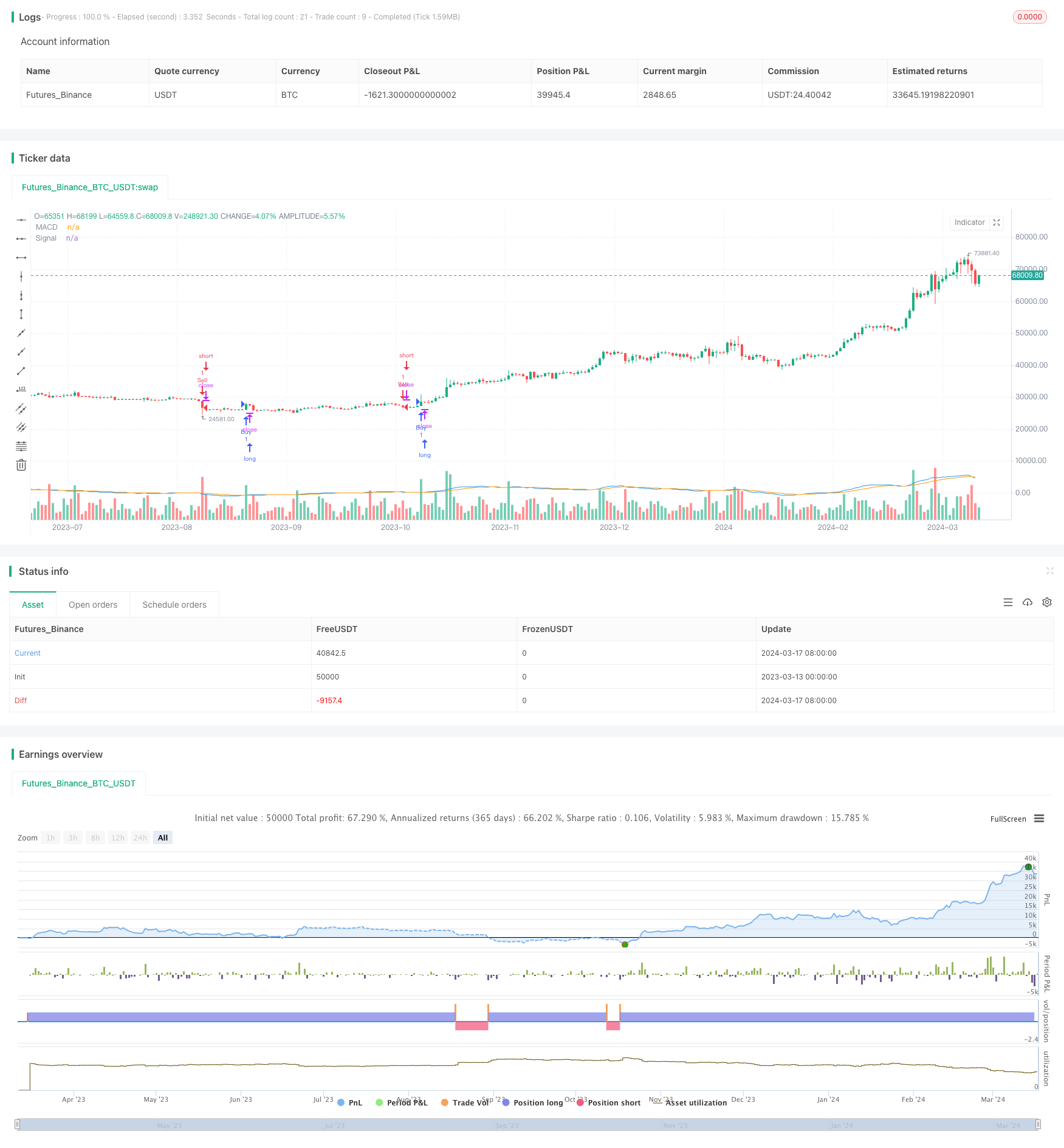
策略概述
该策略主要利用MACD指标和EMA指标来判断市场趋势,结合Lux Algo SMC指标的买卖信号,在趋势向上且价格在EMA之上时买入,在趋势向下且价格在EMA之下时卖出。通过这种方式,该策略能够在趋势行情中获利,同时避免在震荡行情中频繁交易。
策略原理
该策略的核心是MACD指标和EMA指标。MACD指标由两条线组成:MACD线和信号线。当MACD线从下向上突破信号线时,表明趋势可能向上,当MACD线从上向下突破信号线时,表明趋势可能向下。EMA指标则是用来判断价格是否在均线之上,从而确定当前的趋势方向。
具体来说,该策略的逻辑如下:
- 计算MACD指标的三个变量:macdLine、signalLine和hist。
- 计算EMA指标的值:emaValue。
- 获取Lux Algo SMC指标的买卖信号:buySignal和sellSignal。
- 当buySignal为true,且macdLine大于signalLine,且收盘价大于emaValue时,开多仓。
- 当sellSignal为true,且macdLine小于signalLine,且收盘价小于emaValue时,开空仓。
通过这种方式,该策略能够在趋势行情中及时入场,同时避免在震荡行情中频繁交易,从而提高策略的稳定性和盈利能力。
策略优势
- 趋势跟踪能力强:通过结合MACD和EMA指标,该策略能够及时判断市场趋势,在趋势行情中获利。
- 避免频繁交易:通过引入EMA指标,该策略能够避免在震荡行情中频繁交易,从而减少交易成本和回撤。
- 参数可调:该策略的各个参数都可以根据市场情况进行调整,从而提高策略的适应性。
- 代码简洁:该策略的代码逻辑清晰,易于理解和修改。
策略风险
- 参数敏感性:该策略的表现对参数设置较为敏感,不同的参数组合可能导致策略表现差异较大。因此,在实际应用中需要对参数进行优化和测试。
- 趋势判断错误:该策略主要依赖于MACD和EMA指标来判断趋势,但这两个指标都有可能发出错误信号,导致策略出现亏损。因此,需要结合其他指标或方法来验证趋势的可靠性。
- 突发事件风险:该策略无法应对一些突发事件,如重大利空消息、黑天鹅事件等,这些事件可能导致策略出现大幅回撤。因此,需要设置适当的止损措施来控制风险。
策略优化方向
- 引入更多指标:可以考虑引入其他趋势类指标,如ADX、DMI等,来验证MACD和EMA指标的可靠性,提高趋势判断的准确性。
- 优化参数:可以通过遗传算法、网格搜索等方法来优化策略的各个参数,找到最优的参数组合,提高策略的表现。
- 加入止损措施:可以加入一些止损措施,如固定止损、移动止损等,来控制策略的回撤风险。
- 多时间框架结合:可以考虑在不同时间框架下运行该策略,通过高级别时间框架来判断大趋势,低级别时间框架来判断入场点,提高策略的稳定性和盈利能力。
总结
该策略通过结合MACD指标和EMA指标来判断市场趋势,同时利用Lux Algo SMC指标的买卖信号来确定入场点,在趋势行情中获利,避免在震荡行情中频繁交易。该策略优势明显,代码简洁,参数可调,但同时也存在一些风险,如参数敏感性、趋势判断错误、突发事件风险等。为了进一步提高策略的表现,可以考虑引入更多指标、优化参数、加入止损措施、多时间框架结合等方法。总的来说,该策略是一个有潜力的量化交易策略,值得进一步研究和优化。
策略源码
/*backtest
start: 2023-03-13 00:00:00
end: 2024-03-18 00:00:00
period: 1d
basePeriod: 1h
exchanges: [{"eid":"Futures_Binance","currency":"BTC_USDT"}]
*/
//@version=5
strategy("SMC with MACD and EMA", overlay=true)
// 1. MACD Settings
fastLength = input(12, title="MACD Fast Length")
slowLength = input(26, title="MACD Slow Length")
signalLength = input(9, title="MACD Signal Length")
// 2. EMA Settings
emaLength = input(200, title="EMA Length")
// 3. Calculating MACD and assigning variables correctly
[macdLine, signalLine, hist] = ta.macd(close, fastLength, slowLength, signalLength)
// 4. EMA Calculation
emaValue = ta.ema(close, emaLength)
// 5. Get Buy/Sell Signals from Lux Algo SMC Indicator (Modify as needed)
buySignal = input.bool(true, title="Buy Signal from Lux Algo SMC")
sellSignal = input.bool(true, title="Sell Signal from Lux Algo SMC")
// 6. Strategy Logic (Using the corrected variables)
if buySignal and macdLine > signalLine and close > emaValue
strategy.entry("Buy", strategy.long)
if sellSignal and macdLine < signalLine and close < emaValue
strategy.entry("Sell", strategy.short)
// 7. Optional: Plot MACD for visualization
plot(macdLine, color=color.blue, title="MACD")
plot(signalLine, color=color.orange, title="Signal")